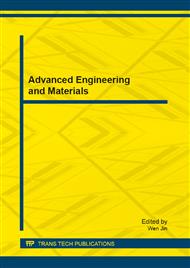p.49
p.55
p.61
p.66
p.72
p.76
p.82
p.86
p.92
Design Optimization of Composite-Insulated Telescopic Aerial Boom
Abstract:
Telescopic aerial boom system is used transport the object or can be used to ease working high altitude. Installation of high voltage transmission tower due to urbanization is increasing. Because working on high places such as wiring operations and electrical maintenance has increased the demand.Boom of aerial work platform are made of steel. So, necessity for safe isolation aerial work platform used for electrical work is increasing. This paper is proposed about applied to the material used in the aerial work platform boom. Insulating material was applied to the aerial work platform the last end boom in boom system. In this paper the structural analysis and formulation of the methodology for the design optimization of telescopic aerial lift boom system is presented. The main objective of the design optimization is to obtain lightweight boom system by optimizing boom cross-section shape, overlap length and plate thicknesses in the worst condition possible. The design optimization problem is formulated as minimizing the weight of the boom system. In this paper analyzes the design of the telescopic aerial boom system of applying the insulating material using the Ansys.
Info:
Periodical:
Pages:
72-75
Citation:
Online since:
February 2013
Authors:
Price:
Сopyright:
© 2013 Trans Tech Publications Ltd. All Rights Reserved
Share:
Citation:


